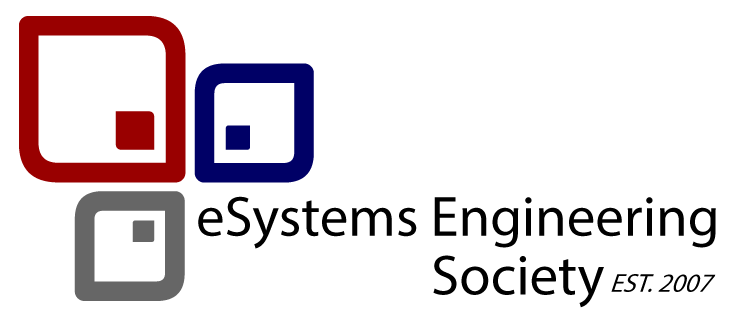This special session is organised and supported by Shahed University, Iran
Session Chair:
- Dr. Ardeshir Dolati, Shahed University, Tehran, Iran
Session Co-Chair:
- Dr. Hoshang Kolivand, Liverpool John Moores University, UK
- Dr. Akbar Zamaniyan, Research Institute of Petroleum Industry, Iran
- Dr. Mansoor Zoveidavianpoor, Universiti Teknologi Malaysia, Johor Bahru, Malaysia
- Dr. Hasan Gorgani, Principal Piping Engineer at Laser Gulf, Baku, Azerbaijan
Synopsis:
Artificial intelligence (AI), the most important general-purpose technology of today is rapidly entering industries, creating significant potential for innovations and growth. With the development of cloud computing, big data, artificial neural network, deep learning and other new technologies, it could be said that AI has achieved a new leap. Artificial intelligence has been back on the stage of research works in all the walks in recent years. Especially, in the oil and gas industry, AI technology is doubtlessly a new shining star that draws the attention of researchers devoted themselves to it.
The oil and gas industry (OGI) is an extremely large industry involving upstream, midstream, and downstream sectors. At present, the application of AI in the oil and gas industry is rapidly developing, as the concept of AI gradually penetrates various stages of the industry, intelligent drilling, intelligent production, intelligent pipeline, intelligent refinery, etc., and it will become the future research direction. The use of methods based on artificial intelligence increases the efficiency of the work carried out both in exploration and production-makes it possible to achieve better results with less cost.
AI and machine learning will change the face of the oil and gas industry and lead to speed up and de-risk many business processes associated with this critical and crucial industry. Also, in particular, is bringing a new approach to developing the OGI, one in which data is key.
Deep Learning, as a subset of Machine learning, is in the Oil and gas industry helps to process huge amounts of data and to achieve the best performance with a large amount of data. Deep learning algorithms perform complex operations where Machine learning algorithms cannot perform complex operations. Artificial Neural Network (ANN) is used as an effective machine learning method to solve complicated problems. In the oil and gas industries, ANN is most widely used in nonlinear and complex problems which cannot be solved by a linear relationship. In the field of exploration, utilization of the ANN has already achieved good results in reducing exploration risks and improving the success rate of exploration wells. Also, in the field of drilling, new equipment such as automatic drilling rigs and intelligent drill pipes have improved the drilling level and reduced the cost significantly.
Reinforcement learning and Deep reinforcement learning algorithms (in which the artificial intelligence agent is represented by a deep neural network), as an important paradigm of machine learning, have been applied to automatic curve matching for well test interpretation, the field development optimization problem, the production optimization problem and the performance of different deep reinforcement learning algorithms on the well control optimization problem had been evaluated with fully connected neural networks (FCNN). Also, it has shown great promise in other fields.
Gathering and transferring the pipeline network of the oil-gas system plays an important role in oilfield production. As an important aspect of optimization for gathering and transferring pipeline networks, layout optimization has been widely studied by researchers during the past decades, that can be formulated as the combinatorial optimization problem.
It is significant that, Data mining, as a new research topic in intelligent predictive, provides the means for making the most of the investment that has gone into the collection and storage of the data. for example, Oil field data mining is a set of tools and technologies used to extract information and knowledge from the collected data in the exploration and production industry. In the new market conditions formed in the energy and mining sectors, it is essential to use all available mechanisms to improve efficiency and it is very convenient to use data mining methods at all stages of oil production.
Also, Big Data analytics is an emerging trend, in the upstream and downstream oil and gas industry. Big Data or Big Data analytics refers to a new technology which can be employed to handle large datasets which include six main characteristics of volume, variety, velocity, veracity, value, and complexity. With the recent advent of data recording sensors in exploration, drilling and production operations, the oil and gas industry has become a massive data-intensive industry. Analyzing seismic and micro-seismic data, improving reservoir characterization and simulation, reducing drilling time and increasing drilling safety, optimization of the performance of production pumps, improving petrochemical asset management, improving shipping and transportation, and improved occupational safety are among some of the applications of Big Data in oil and gas industry.
Many industries use robotics to increase productivity and improve working conditions, and the oil and gas sector is no exception. Oil and gas companies can utilize robots to automate repetitive and dangerous tasks, eliminate inefficiencies, reduce industry-wide costs, and increase profit margins. Robotics and automation significantly benefit the production phase of oil and gas operations. You can avoid putting human workers’ lives at risk by leaving dangerous and challenging tasks to robots. For instance, aerial drones and unmanned underwater vehicles can explore areas that are dangerous for humans.
The oil and gas industry is widely using Virtual reality (VR) technology to train and minimize risks for engineers. Also, it helps to visualize 3D simulations of real-world objects. VR and augmented reality (AR) allow engineers of the oil and gas companies to monitor equipment without being physically present at the location, as well as train employees without putting them in danger of affecting the normal work routine.
This session aims to bring together researchers that perform cutting-edge research activities in novel applications of artificial intelligence technologies in the oil and gas industry.
Topics:
Therefore, this special session invites authors to submit high-quality research papers on emerging technology of Artificial intelligence for oil and gas industry applications, covering topics which include (but are not limited to) the following:
- Recent Advances in Artificial Intelligence (AI) in the Oil and Gas Industry
- Machine Learning (ML) and Deep Learning Methods in the Oil and Gas Industry
- Key Challenges in Upstream Oil and Gas Industry Using AI and ML
- AI in Development Plan Optimization
- Applying AI to Optimize Oil and Gas Production
- The Application of AI in the Oilfield Development Identification
- The Application of AI in Hydraulic Fracturing Detection
- The Application of AI in the Oilfield Diagnosis
- Big Data Methods and Tools in the Oil and Gas Problems
- Data‑Based Development in the Oil and Gas Industry
- Intelligent Optimization Methods for the Oil-Gas Industry
- Data Mining Applications in the Oil and Gas Industry
- Applying Big Data Technologies to Optimize Operations in Upstream Petroleum Industry
- Big Data Challenges in the Oil and Gas Companies
- Applying Reinforcement learning and Deep reinforcement learning for the Oil-Gas Industry
- Applying Deep neural network in the Oil and Gas Industry
- The role of Robotics in the oil and gas industry
- Virtual-Reality Simulators in the Oil and Gas Industry
- Augmented Reality for Oil and Gas Industry
- Applying Combinatorial optimization and Reinforcement Learning in Oil and Gas Industry
- Applying AI and ML for Oil Pollution detection
Paper Submission:
Prospective authors are invited to submit full-length papers (not exceeding 6 pages) conform to the IEEE format . All papers will be handled and processed electronically via the EDAS online submission system. |


